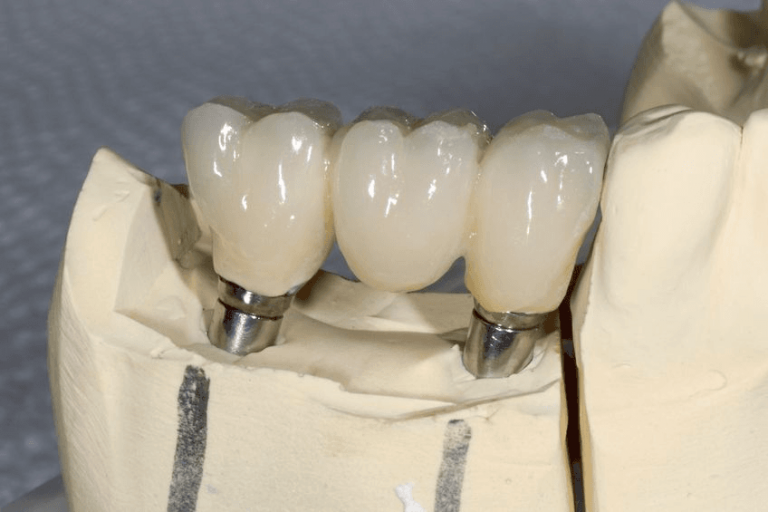Today’s post looks at the complex process required to construct a dental crown. Dental crowns can be constructed with metal, ceramic (porcelain), plastics, or varying combinations of these. We will describe the process used to create a porcelain crown, though the steps are similar to those used for other materials.
As far as beauty goes, today’s high-quality crowns are just as attractive and natural looking as actual teeth. (A crown that looks like a white Chiclet and sticks out like a sore thumb is not a high-quality crown from dentist near you.)
When one of our Wetaskiwin Family Dental patients needs a crown, a dental assistant makes an impression of all the teeth. The impression is sent to a laboratory where the plaster teeth are separated. The individual tooth mould in need of restoration is scanned into a computer to have the perfect dimensions to send to the factory.
The technologically advanced factory has a computerized machine that will then pour plaster into cylindrical moulds, forming blanks. Once hardened, the process of making the tooth from the plaster blanks begins.
The machine then takes the scanned data from the impression and begins carving out the contours found in the scan. The finished tooth is not to scale, being 20% to 30% larger than needed. This enlargement is to allow for material shrinkage that will later occur.
The machine then dips the plastered tooth into liquid ceramic. The ceramic hardens and gives the tooth a glossy, natural finish that is indistinguishable from a genuine tooth. The machine then starts a new process of orienting the tooth with others. This time, ceramic powder is poured into new moulds over the plaster tooth. The moulds are put on a rod and then plunged into a water-filled chamber. Once the chamber lid is closed, water pressure increases, solidifying each ceramic tooth.
The restoration is then chiselled to perfectly match the plastered tooth that is inside. This tooth becomes the ceramic shell of the crown and is easily lifted off the plastered tooth.
This shell, or coping, will then be exposed to a high temperature for increased strength. It also shrinks to the proper size when exposed to a high temperature. Once finished, a plastic replica of the original tooth is created from the computer scan. The new shell is then tested for precise fitting over the tooth.
The shell then leaves the factory for the lab, where layers of coloured porcelain are painted on it. A skilled ceramist – an artist in every sense of the word – may apply up to 15 layers of porcelain to perfectly match the variations in the surrounding teeth. This labour-intensive process accounts for much of the cost of a high-quality crown.
The crown is then fired to making the porcelain more dense throughout. More hand contouring follows, as required, and then is finished with a clear, ceramic gloss.
All of this work results in a terrific crown for one of our patients!
If you have a broken tooth or old, unattractive crown, or want information about cosmetic dental smile makeovers, call 780-352-5113 to discuss the possibilities.

